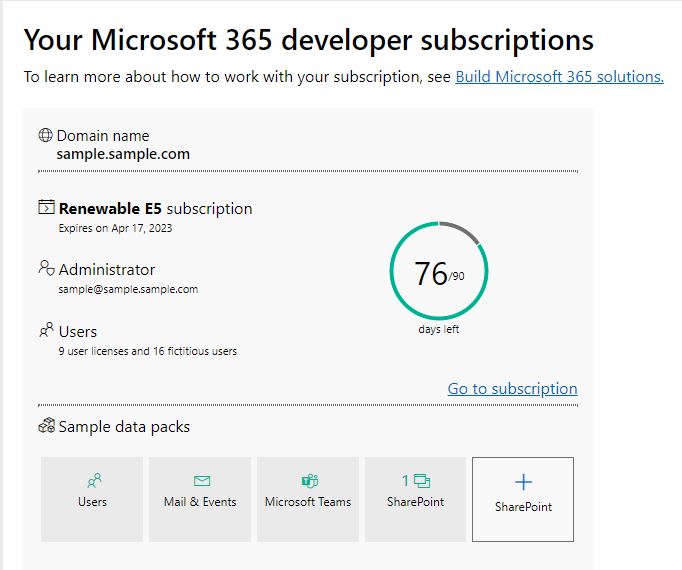...
In this tutorial, we will show the process of sending emails using Microsoft Graph API with Joget JSON Tool. The guideline will help you automate the process of sending emails, making it a more efficient and streamlined process. This article will provide a step-by-step guide to help set up and send emails using Microsoft Graph API and Joget JSON Tool.
Set Up Azure Application
Create Developer Account
First, You need to set up the Microsoft Graph API configurations, You have to create a Free Microsoft 365 Developer Tenant account from here to register your Azure account to get the tenant ID which is later required to send the email. After creating the account, copy the email
Create Developer Account
Create
email address to use it to sign up to Azure.
Figure 1: Create A Free Microsoft 365 Developer Tenant Account
Create Azure Account
Upon creating Microsoft 365 Developer Tenant account, To start creating your Azure application, you must first sign up on Azure here , but simply signing up using your personal Microsoft account wouldn't work as it won't give you full access to Azure. To get this access, you will need to join the Microsoft Developer program.To join the Microsoft Developer program, simply sign up on their website with your personal Microsoft account, and get yourself a Microsoft 365 Developer subscription, you can either purchase it, or get a 90 day free trial.given Microsoft 365 Developer Tenant email address in the previous step.
Use the email in the "Administrator" section to sign up for your Azure account and this time you will have full access to it.
...
- Azure Active Directory
- App Registrations
- New Registration
- Choose a name for the app
- Select your support type, for this guide, we will be using the third one
- And for this guide, ignore the redirect URI
- Register
After this you should see in the app's overview you have an "Application (client) ID" and a "Directory (tenant) ID", these two are important so that your API call will actually be using your app and your account.
...



